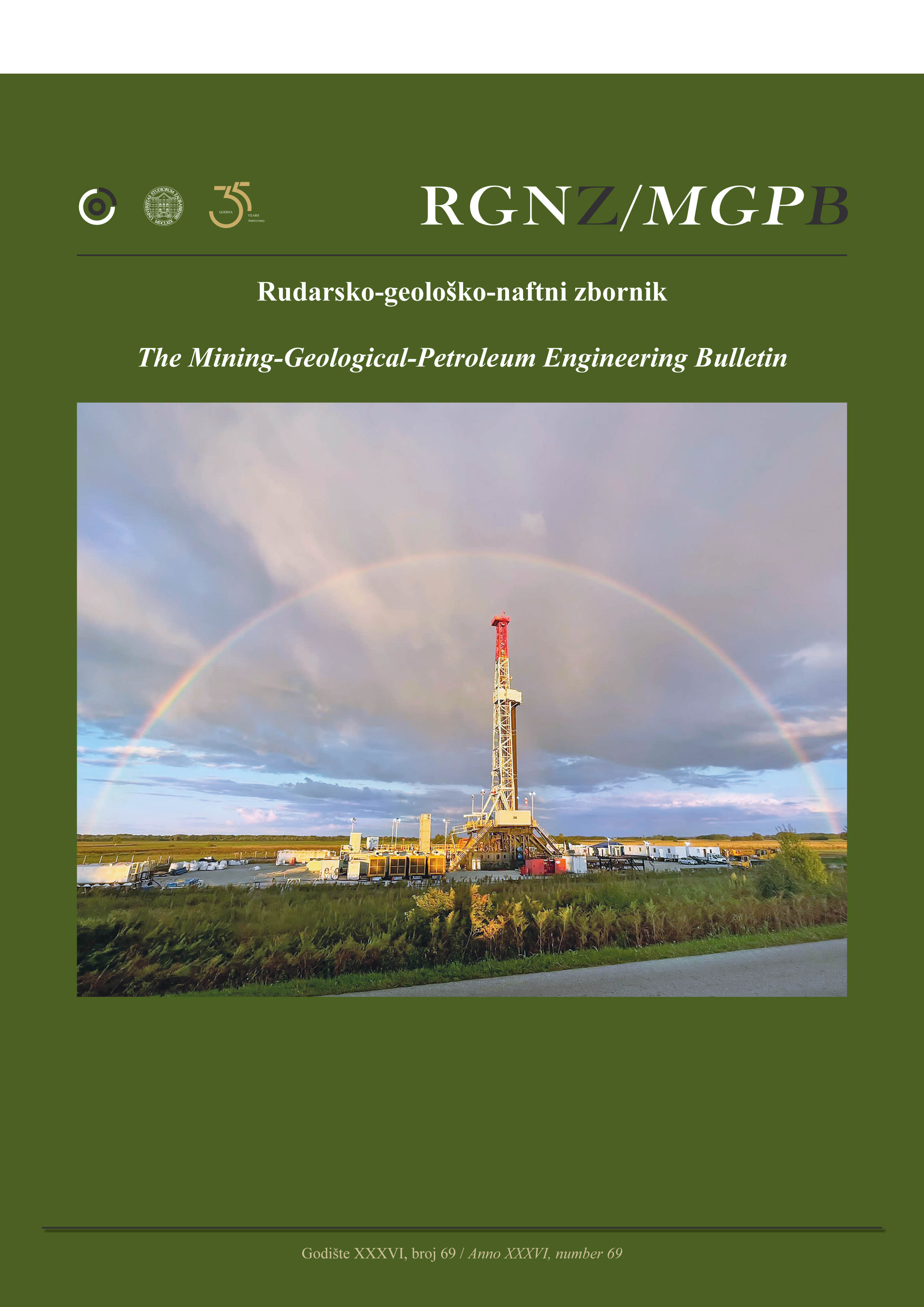Examining the Impact of Coal Gas Emissions on the Stability Analysis of Coal Pillars: A Critical Literature Review
DOI:
https://doi.org/10.17794/rgn.2024.3.7Keywords:
coal mechanical properties, methane emissions, coal pilar stability, gas adsorption and desorption, rock mechanicsAbstract
An essential component of guaranteeing the security of underground coal mines is the stability of underground areas. Coal pillars are left in place in underground coal mines to stabilize opened regions where excavations have redistributed in situ stresses. The designs of pillars have been developed in accordance with the necessary safety and economic constraints. The safe and cost-effective design of mining pillars, particularly coal pillars, is influenced by various factors. The purpose of this publication, which is a portion of a doctoral thesis, is to support a theory regarding the impact of methane emissions on the stability of coal pillars. This topic has not received much attention in the literature. The pillar design's initially effective parameters are examined and categorized in this study. The impact of coal gas emissions on the stability of coal roofs, pillars, and walls are investigated for the first time. Previous research on the mechanical behavior of coal exposed to different kinds of gases is examined for this aim. The literature's findings also showed that coal's mechanical properties will decrease when exposed to gases, including shear strength, elastic modulus, and uniaxial compressive strength. The coal texture develops joints and cracks as a result of gas adsorption and emission, which lowers the mechanical properties of the coal and causes instabilities in underground spaces. The literature suggests that gas emissions from coal pillars and walls in underground mines most likely produced unpredictable instability and outburst. To the best of the authors' knowledge and ability to determine, there is an absence of critical literature reviews on the mechanical properties of coal during gas emissions, which is the topic of this work.
Downloads
Published
How to Cite
Issue
Section
License
Copyright (c) 2024 Emad Ansari Ardehjani, Mohammad Ataei, Farhang Sereshki, Ali Mirzaghorbanali, Naj Aziz

This work is licensed under a Creative Commons Attribution 4.0 International License.
Creative Commons-BY
Authors who publish with this journal agree to the following terms:
In agreeing this form, you certify that:
- You read the ethical codex of the RGN zbornik available at journal web.
- You submitted work is your original work, and has not previously been published and does not include any form of plagiarism.
- You own copyright in the submitted work, and are therefore permitted to assign the licence to publish to RGN zbornik.
- Your submitted work contains no violation of any existing copyright or other third party right or any material of an obscene, libellous or otherwise unlawful nature.
- You have obtained permission for and acknowledged the source of any illustrations, diagrams or other material included in the work of which you are not the copyright owner.
- You have taken due care to ensure the accuracy of the work, and that, to the best of your knowledge, there are no false statements made within it.
- All co-authors of this submitted work are aware of, and in agreement with, the terms of this licence and that the submitted manuscript has been approved by these authors.
Publication licence
You retain copyright in your submitted work, according to journal license policy (CC-BY). By signing this form you agree that RGN zbornik may publish it under the publication licence. In summary the licence allows the following:
Anyone is free:
- To copy, distribute, display, and perform the work.
- To make derivative works.
Under the following conditions:
- The original author must always be given credit.
- The work may not be used for commercial purposes.
- If the work is altered, transformed, or built upon, the resulting work may only be distributed under a licence identical to this one.
Exceptions to the licence
In addition to publishing the work printed under the above licence, RGN zbornik will also enable the work to be visible online.
The journal editorial can change the licence rules anytime but it cannot retroactively restrict author(s) rights.


